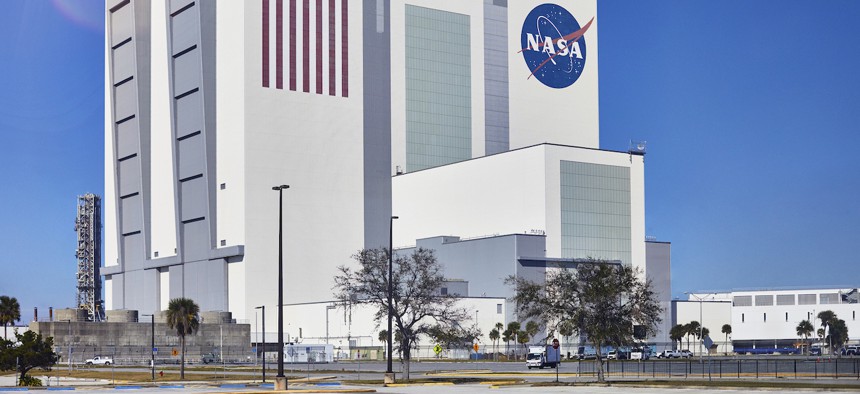
NASA’s 2022 score was good, but a smidge less good than it was last year. Bjarte Rettedal/Getty Images
Not Even the Best Places to Work in Government Were Immune to Federal Employee Morale Decline Last Year
The Partnership for Public Service on Wednesday released the first batch of rankings from its annual analysis of the Federal Employee Viewpoint Survey.
A good government group on Wednesday released its first batch of rankings stemming from its annual analysis of the Federal Employee Viewpoint Survey, revealing that even some of the best performing agencies struggled with federal employee morale in 2022.
Following a upward spike in employee engagement and morale in the Office of Personnel Management’s annual survey of federal worker attitudes in 2020, corresponding with the rapid expansion of telework to ensure continuity of operations during the COVID-19 pandemic, the survey reported a decline in 2021, as agencies began to formulate plans to bring workers back to traditional worksites, and another slight decrease last year, which OPM described as employee engagement metrics “stabilizing.” Roughly half of the federal workforce was never able to take advantage of expanded telework due to the nonportable nature of their duties.
The Partnership for Public Service on Wednesday unveiled its top 10 list of large, medium and small agencies from its latest Best Places to Work in the Federal Government report, which is set for release next month. Within those lists, only two of the top 10 large agencies increased their scores in the partnership’s analysis, while only 4 of the top 10 medium-sized agencies boasted improvements to their engagement scores. Roughly half of small agencies within the organization’s top 10 list increased their performance in 2022, although smaller agencies traditionally see more drastic swings in their scores from year to year.
Atop the rankings of large agencies again this year was the National Aeronautics and Space Administration—which now conducts its own internal workforce survey outside of FEVS—with a score of 84.3 out of 100. That marks a 0.8 point drop from its 2021 performance of 85.1. In second place was the Health and Human Services Department, which saw a 0.1 point drop to 74.3 last year. The intelligence community came in third place, although it, too, suffered a modest decline from 73.4 in 2021 to 71.9 last year.
Only the Office of the Secretary of Defense, joint staff, defense agencies and Defense Department field activities, treated as one unit for the purposes of the Partnership’s report, in eighth place and the Air Force Department in 10th saw improvements to their score among large agencies.
The Government Accountability Office topped the rankings of mid-sized agencies for the third straight year in 2022. But they were not immune to falling engagement, either, dropping from a score of 89.8 in 2021 to 87.7 last year. Another perennial contender in the rankings, the National Science Foundation, fell 3.2 points to a score of 82.8 in 2022, good for second place, while the Securities and Exchange Commission improved from 82.0 in 2021 to 82.2 last year to secure third place.
In addition to the SEC, the Energy Department, Environmental Protection Agency and Small Business Administration all bucked the trend, improving their employee morale in 2022, with the latter gaining nearly 5.9 points compared to their 2021 performance.
Last December, OPM attributed the Federal Employee Viewpoint Survey’s employee engagement index’s stasis at 71 out of 100 and a drop in its global satisfaction index from 64 to 62 in 2022 to federal worker compensation lagging behind inflation, as well as agencies implementing their return to office plans during the survey’s spring solicitation period. Although the announced cost of living increase for Social Security annuitants was 8.7% in 2023, the pay raise for federal employees was only 4.6% on average.
The rest of the partnership’s rankings, along with its analysis of Federal Employee Viewpoint Survey trends, is slated for release on April 12.







